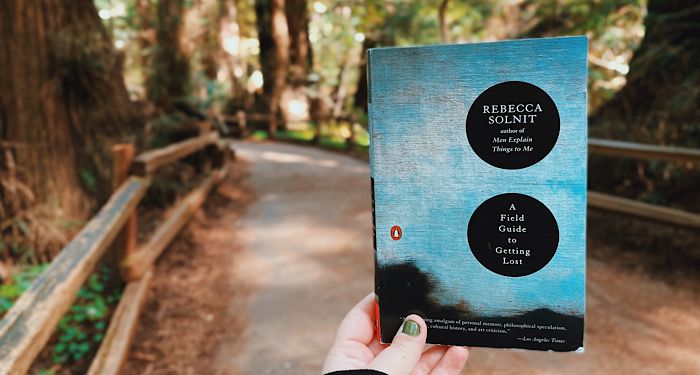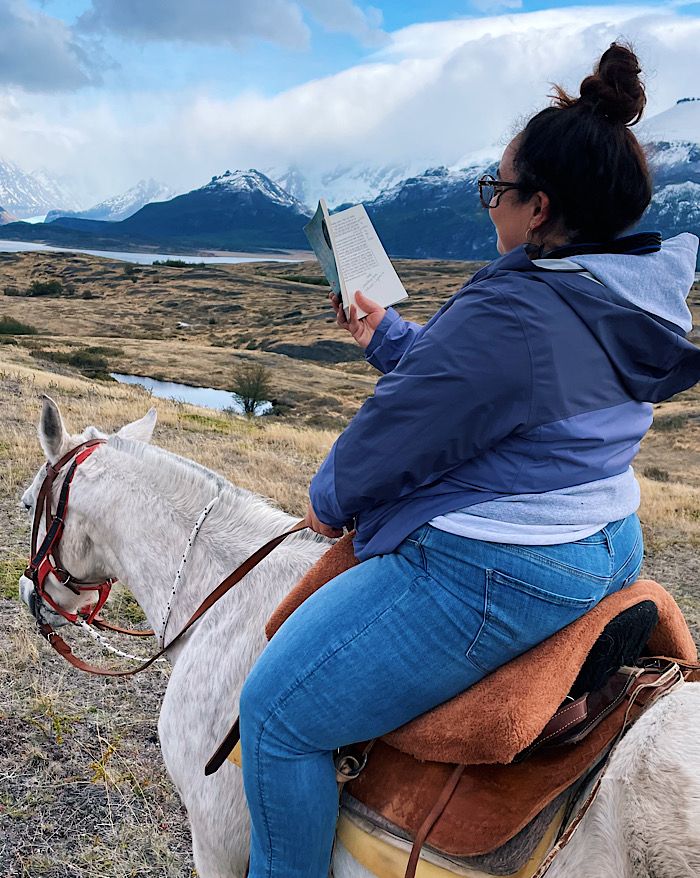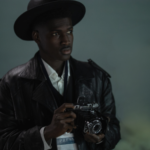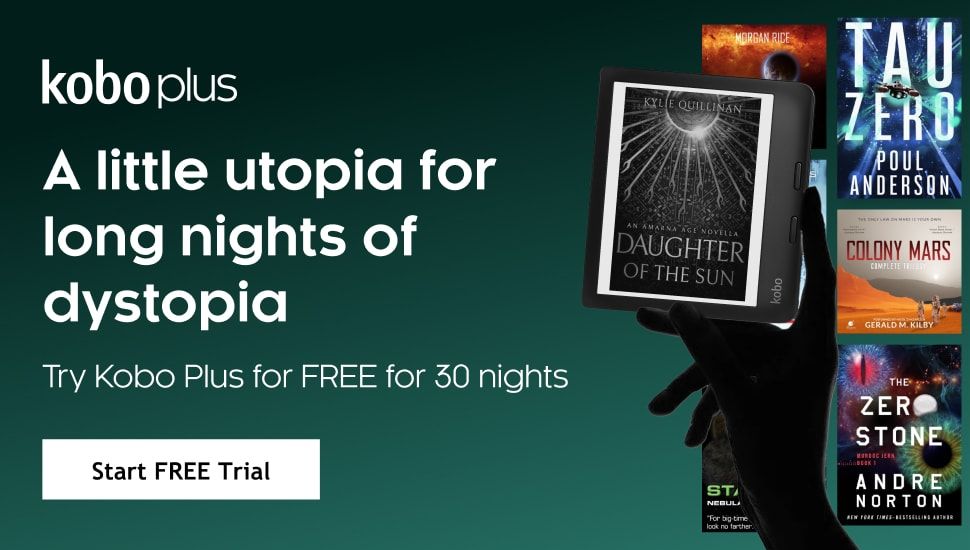
How Getting Lost Taught Me a Better Way to Read
When I first picked up Rebecca Solnit’s A Field Guide to Getting Lost, it was on vacation for my 28th birthday. My plan was to read it while outside in San Francisco and the Muir Woods. It felt perfect. Reading the first essay on a redwood root bigger than me was perfect.
I figured I could finish the whole essay collection on the plane ride home. But the essays themselves seemed to scold me for my plan.
In that first essay Solnit writes, “It is the job of artists to open doors and invite in prophesies, the unknown, the unfamiliar.” She adds that there is an art “of recognizing the role of the unforeseen, of keeping your balance amid surprises, of collaborating with chance, of recognizing that there are some essential mysteries in the world and thereby a limit to calculation, to plan, to control.”
A secret about me: I may love to wander and explore, but I’m also a big, big planner. I like control. I’m a completionist: I like to read front to back, one book at a time. I like to make a plan and stick to it. But over the past few years, I’ve gotten better at letting myself truly wander, and discover, and enjoy — all the things this book was about. And so, it occurred to me on the plane that there was something wrong with finishing it straight through just to get it done.
So after that one essay on the plane, I closed the book and came up with a new plan. I wasn’t sure how committed I would be to it at first. I read the next essay on the plane home, then I put it away.
Instead of reading this book from front to back, I decided that I would read its essays one at a time, reading each in a different place, and only picking it up when it felt right to bring it with me. When the wanderlust or exploratory energy had built up just right in the pit of my stomach.
So far, I have read these book’s essays while:
- Sitting on a giant root in Muir Woods, early in the morning, the fog still heavy around the redwoods
- On the airplane from San Francisco to Chicago, studying the horizon and thinking about the blue mountains of California
- At home, on my 28th birthday
- High in the sky over the Georgia-Florida border and over the Gulf
- Listening to the rhythm of waves on Anna Maria Island in Florida, salty and still damp, just minutes after getting to meet a manatee in the surf
- Beside Lake Michigan, in summer, looking into the blue horizon
- Waiting for tamales in Pilsen / sitting in an orchard in southern Illinois after a long stretch of apple-picking
Now, I look at how destroyed this book has become. It has sweat on it from my hands, and probably a little sticky sweetness from one of the apples we picked. I know there’s a little rain that snuck into my tote in San Francisco. It has spray on it from two oceans so far. It probably still has a little sand somewhere near the spine. It has wear from sitting in the soil of Muir Woods. Its cover is bent from being buried in hiking backpacks and layered into suitcases.
There was a time when that would have felt like neglect to me — this slow wearing down of a book. But I’m letting myself read differently. And this listing of places, of discoveries, is more in the spirit of Solnit’s book than any review could be. In each place, I read the essay in between snatches of birdsong, of sunset, of landscapes far below me that I couldn’t locate later on a map.
I plan to bring the book along with me, to finish the final few essays in Argentina. I can’t tell you yet where I’ll read them, because that would definitely ruin the point. The point is, I’ll have it in my suitcase. I’ll pick it up on the right day, bring it with me to the right park or ocean shore, and find myself reading about what it means to wander as I explore a distant blue that I don’t yet know.
Update:
I carried this lovely book all the way to Argentina. I read the second-to-last essay in the middle of a bird reserve in El Calafate in Patagonia, when it was way too windy to read but I needed a quick break, and finished it over a submarino — steamed milk, with a dropped-in chocolate bar (i.e. heaven) — in town. It was a day when I felt a little bit sad and a little bit lost.
For the final essay, the book was thrown into a saddlebag and carried on a day-long horseback ride into a river valley in Patagonia. I read it before we had a lunch of steak and wine. I found a spot beside a small stream, after startling a hare out of some calafate bushes. It was a day when I felt brave and full of adventure and ready to wander.

To the list of things it probably has in its pages, you can add a drop of hot cocoa, some red wine, some good Patagonian dirt, a little drizzling rain, and a little horse-smell. And now it’s one of the most valuable books I own, in a way that no other book could really replicate.
Want more reading-while-traveling content? Check out my list of 15 fantastic Argentinian books in translation, or check out this list of must-have bookish travel essentials.
















